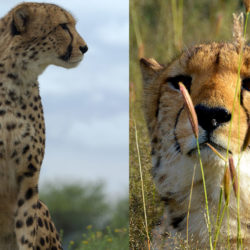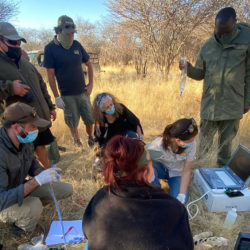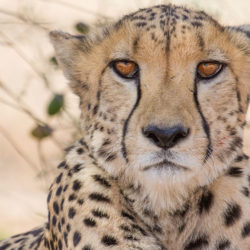Update on Cheetahs Released in Erindi
-
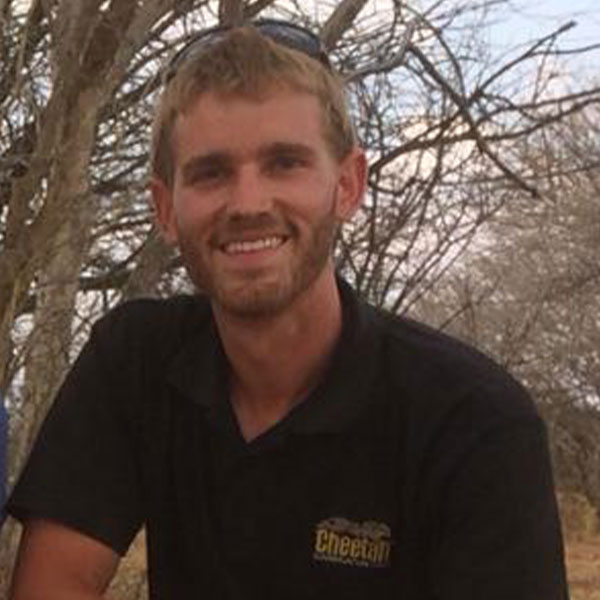
- by Eli Walker June 18, 2019

At the end of February, CCF released a coalition of 4 adult female cheetahs (Susan, Tatjana, Georgia, and Daenerys) into the Erindi Private Game Reserve. These 4 females are all sisters and were rescued in 2016 after their mother was killed when they were just 5 months of age. Their brother, Elwood, was released into the reserve earlier this year along with brothers Kamin and Cyclone.
The release team had to lure the females out of their holding boma within the reserve, and once the females were out the team provided them with their first meal. We always do this to ensure the cheetahs can focus on staying alert and exploring the reserve during the first days of their release. For the first few days out, the females remained within the area of the boma, but then began exploring the reserve. We’ve been monitoring them and so far they are doing well.
Ever wonder what a cheetah’s visit to a playtree looks like? The photo below captured while monitoring Kamin and Cyclone after their release in Erindi Private Game Reserve earlier this year. This is a perfect example of what cheetahs do when visiting a playtree. In addition to leaving their own scent in the form of scat and urine (and maybe even from scratching), you can see how interested these males are in the other scents left by previous visitors to the tree, including other cheetahs and even leopards. Playtrees are very important for cheetah social behaviour.
As cheetahs aren’t strictly territorial like leopards or lions, they must effectively communicate with other individuals living within the same area to avoid unexpected encounters (which between unrelated males or coalitions of males, could result in a fight to the death). So, playtrees and other scent posts provide cheetahs an effective way of communicating with one another without direct contact. When investigating a playtree, the cheetah can learn who else is in the area, what their route of travel likely was (and thus areas to avoid), and if anyone is available for courting, and afterward they leave their own scent to communicate the same details to the tree’s next visitor.
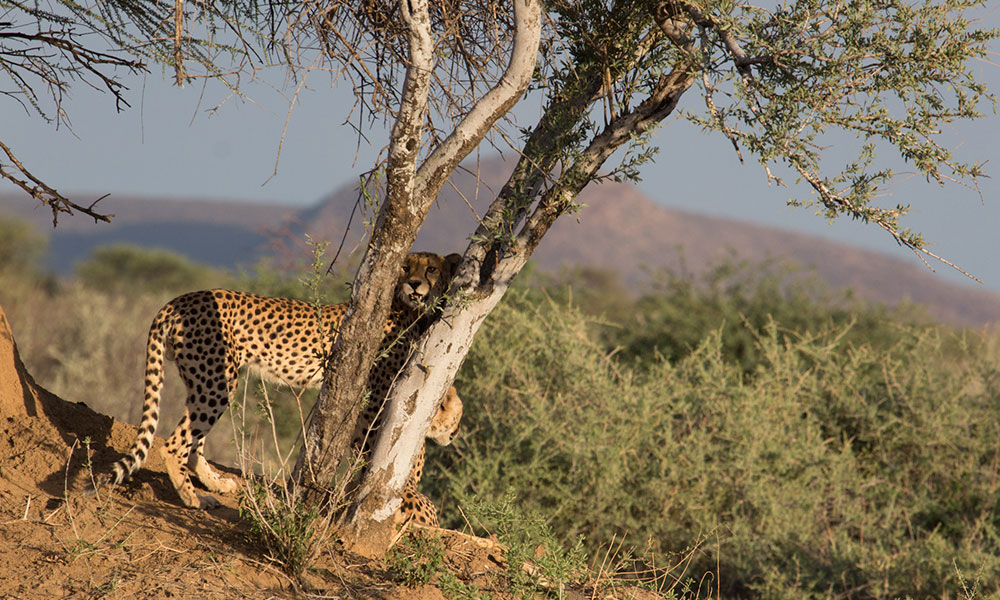
In general, cheetahs primarily target the small to medium sized antelope. Here in Namibia, that can include steenbok, duiker, springbok, impala, and the young of the larger antelope like oryx or kudu calves. As females live solitary adult lives, they hunt more frequently the smaller antelope like steenbok, duiker, and, for experienced females, springbok and impala. An experienced male coalition can however sometimes take down larger prey such as red hartebeest and even sometimes oryx and kudu. For most cheetahs however, fully grown oryx are too large to attempt to hunt and adult giraffe are entirely out of the question. As you can see in the photo below, our coalition of two males Kamin and Elwood have very little interest in trying to hunt these larger species. This appropriate prey selection is one of the qualities that we want to see the cats learn before we can consider them self sufficient.

Carnivores in arid regions like Namibia can survive well with little access to water as they get a lot of the moisture they need from the blood of the animals they eat. However, they rarely pass up an opportunity to drink. Waterholes are a dangerous place for many animals, including cheetahs. As it could be the only source of water available for kilometres, it serves all the animals in the region, predator and prey alike. Cheetahs must be extremely cautious when visiting a waterhole as other predators such as lions, leopards, and spotted hyenas could also be nearby. As you’ll see in the video below, Kamin and Elwood are extremely cautious while drinking. At one point, Elwood kicks a piece of soil into the water and scares himself.
Thank you to Natural Habitat Adventures who participated in funding GPS collars for the cheetah rewilding program.
Related Reading
-
April 5, 2022
Eulogies for Ron and Khayjay -
November 5, 2021
Field Scans and Clinic Exams with SoundVet -
October 18, 2021
Eulogy for Resident Cheetah B2

